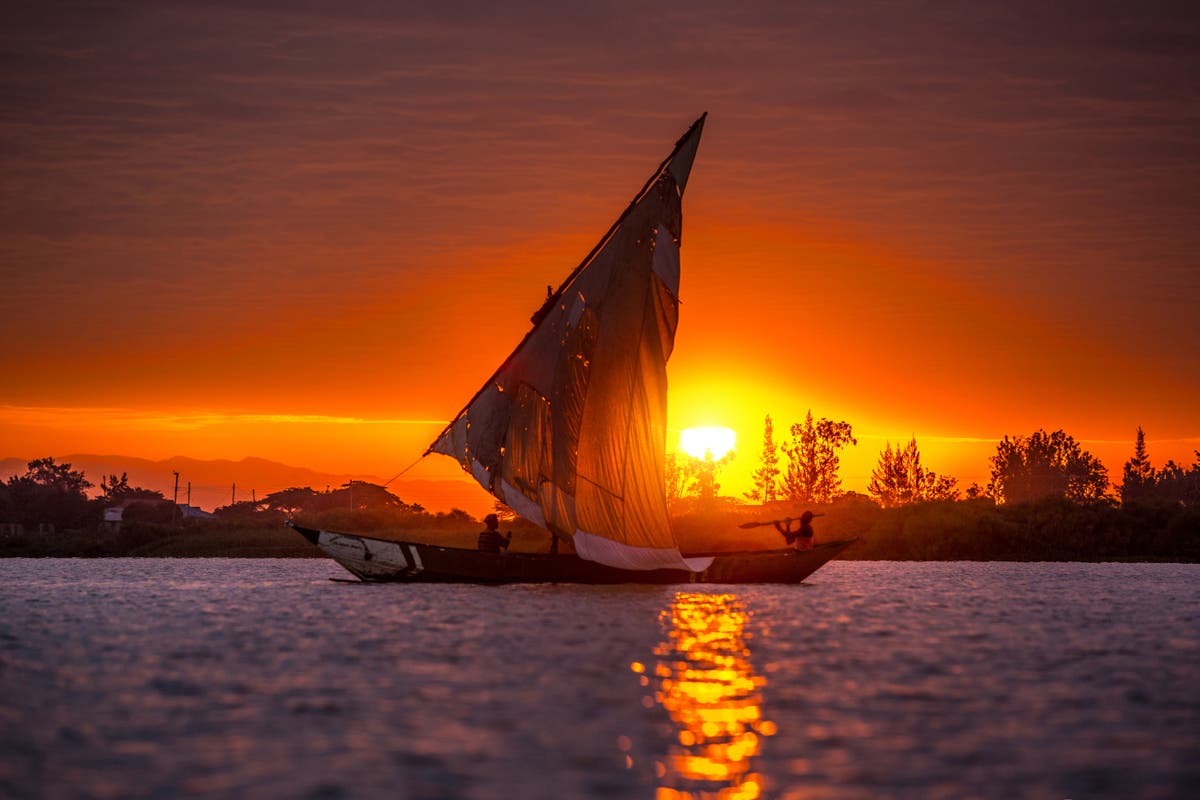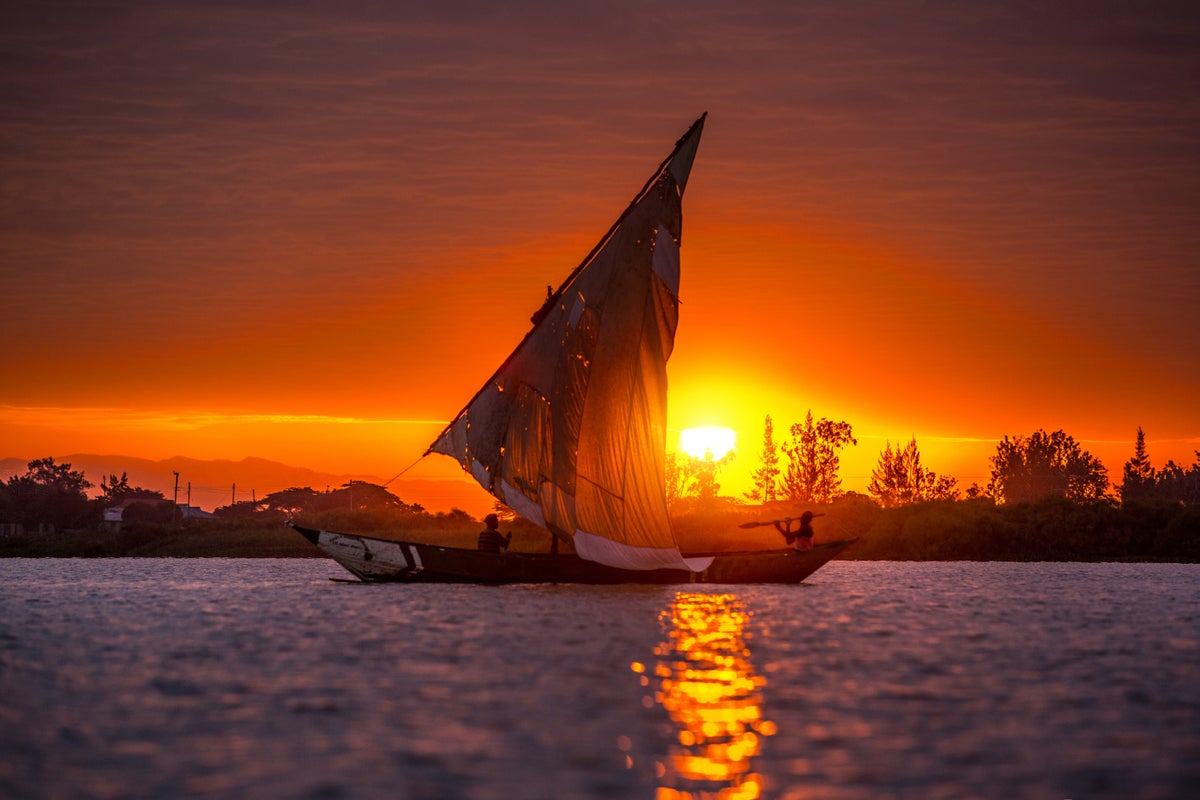‘If I have ever seen magic, it has been in Africa,’ penned Hemingway after an eye-opening three-month safari through Africa’s varied landscapes. From untrodden beaches and mountain-fringed national parks to iridescent lakes and wildlife-filled savannahs, Kenya is home to some of the most spectacular African terrains and has plenty to offer the curious traveller. Here’s where to go and what to do for a once-in-a-lifetime trip to Kenya.
Islands of Lake Turkana and Sibiloi National Park
The islands of Lake Turkana sit on the northwestern edge of Kenya along the boundary of Turkana and Marsabit. It’s here you’ll find the largest alkaline lake in the world, Lake Turkana, listed as a UNESCO World Heritage Site in 1997 and otherwise known as the Jade Sea because of its bright, incandescent colouring. The lake’s three islands are a breeding site for hippos and crocodiles and a stopover for Palearctic bird colonies, including flocks of flamingos, pelicans and storks. You can also catch a boat out to Central Island, the breeding ground of more than 120,000 Nile crocodiles annually. It’s particularly special to visit after the wet seasons peak in April and November and the scenery springs to life.
Right next to Lake Turkana, straddling the Ethiopian border, you’ll find the magnificent Sibiloi National Park, an excellent destination for travellers who yearn for the road less travelled and those with a keen interest in palaeontology. This volcanic park is known for its unique geo-morphological features, fossils and archaeological significance, which is how its nickname, The Cradle of Humankind, came about.
Crescent Island, Lake Naivasha
Two hours in the car from Nairobi, Crescent Island is a game sanctuary where you’re almost guaranteed to a wide array of wildlife
(Crescent Island Game Sanctuary)
Crescent Island is a game sanctuary on the eastern side of Lake Naivasha, rich in biodiversity and teeming with wildlife. It’s home to more than 1,500 hippos and 400 bird species, including flamingos, cuckoos, nightjars and more. The island is a two-hour drive from Nairobi, followed by a short 15-minute boat trip from the mainland, and it’s one of the best islands to enjoy a walking safari. You’re almost guaranteed to see grazing zebras, giraffes, wildebeests and impalas going about their daily business. If you’re an avian enthusiast and would rather take to the water, you can also hop on a guided boat ride to spot an incredible assortment of birdlife basking on the banks of Lake Naivasha, like pelicans, cranes and fish-eating eagles. If you have time, you might also want to consider a hike up Mount Longonot, a dormant volcano on the southeastern side of Lake Naivasha. It last erupted in 1860 and is the stomping ground of leopards, buffaloes and antelopes. But it’s worth noting that this isn’t for the amateur hiker.
Diani Beach
Diani Beach is a welcoming tropical paradise, perfect for some post-safari relaxation
(@lavidashannon)
Flanked by coconut palm trees and silky white sand, Diani Beach is the epitome of tropical paradise and is a welcoming sanctuary for some post-safari rest and relaxation. The sea is bordered by coral reefs which protect the beach from heavy surf and create the ideal conditions for swimming and snorkelling. It’s also a popular spot for water sports, from kayaking and body boarding to windsurfing and paddle boarding, with several places offering equipment to hire. So, whether you’re a sunbathing equatorial sun-chaser or a get-up-and-go thrill-seeker, Diani Beach ticks all boxes for every type of traveller.
When you’re not soaking up the rays on this endless stretch of coastline, there are plenty of beachside cafes and bars for a spot of wining and dining throughout the day, but for something extra special, head to Ali Barbour’s Cave Restaurant, a short shuttle bus away. This seafood restaurant is set in an ancient, naturally-formed coral cave deep underground and is said to be between 120,000 and 180,000 years old. This unique restaurant is the perfect spot for an unforgettable dinner below an undisturbed, star-filled night sky.
Safari spots
Most people venture to Kenya in hopes of glimpsing the Big Five, with the most well-known park being the Maasai Mara National Reserve, home to year-round game viewing and the spectacular annual Wildebeest Migration. But, several other parks also offer the opportunity to see wildlife up close, like Amboseli National Park, home to large herds of African elephants and a varied mix of terrains, from woodlands and hills to wetlands and dry, open savannahs. It’s also overlooked by the soaring, snow-capped Mount Kilimanjaro, the tallest free-standing mountain in the world.
Away from the more mainstream parks there are wetlands, woodlands and savannahs a-plenty with ample amazing wildlife-spotting opportunities
(Getty Images/iStockphoto)
Ardent safari lovers will also love Samburu National Park on the banks of the Ewaso Ng’iro river, famous for its abundances of rare species, like the Somali ostrich, the Reticulated giraffe and Grevy’s zebra. There’s also Lake Nakuru National Park, where black and white rhino species reside and flamingos feed on the giant alkaline lake. But, what makes any safari unforgettable is the guide you hire, who will come armed with mindblowing anthropological knowledge, like recognising leopard warnings from monkey calls and spotting fork-tailed drones from a mile away.
Click here to experience these staggering landscapes for yourself, and for inspiration on other unmissable Kenyan experiences








More Stories
Everything you need to know about July and August rail industrial action
‘It’s cancerous’: How seaside towns fight back against second home owners
EasyJet flight diverted after passenger medical emergency on board